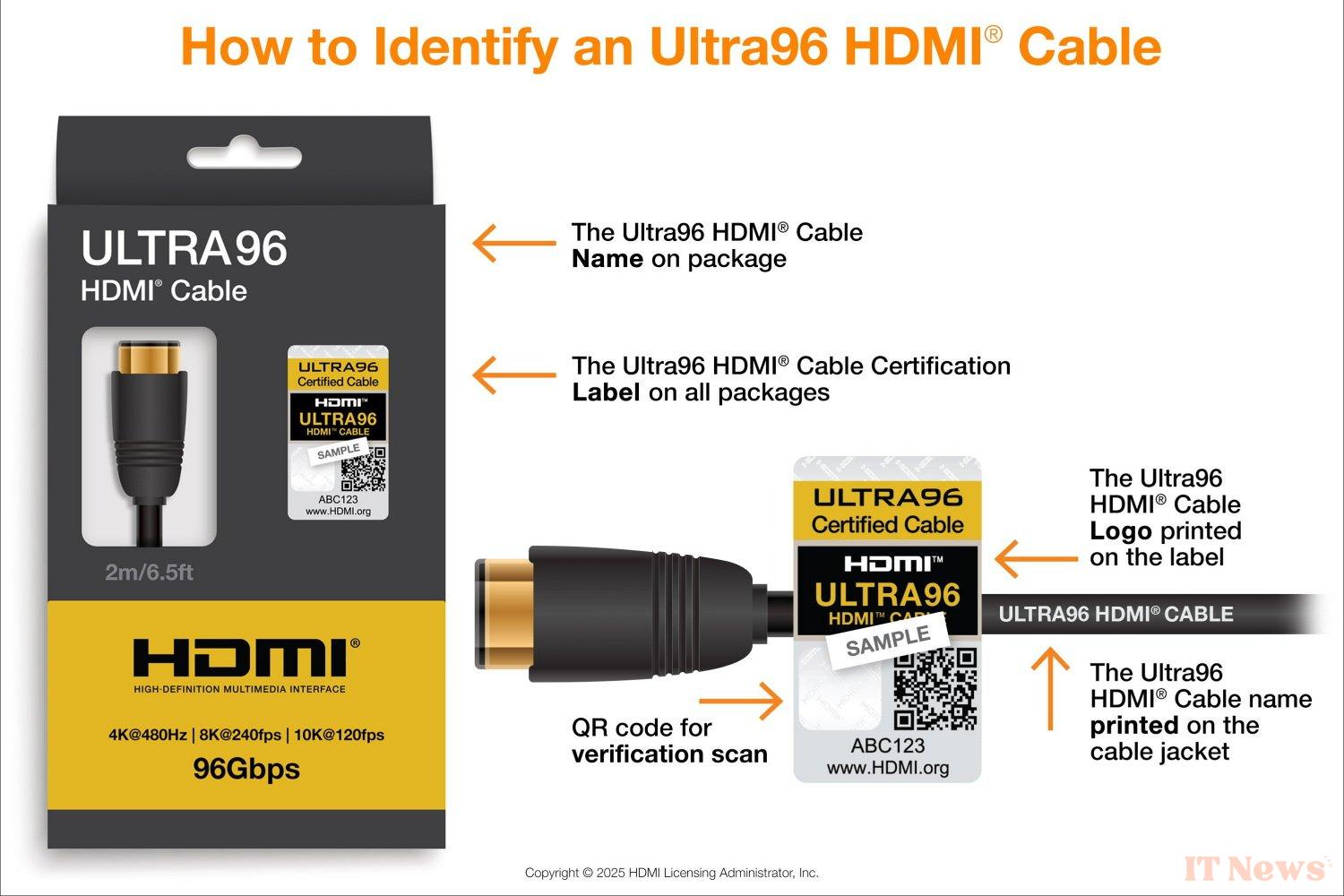The main new feature of this new version of the standard is probably the huge increase in bandwidth: we now have 96 Gbps available, double what HDMI 2.1b offers and a little more than the 80 Gbps offered by DisplayPort 2.x. In practice, even if part of this bandwidth is reserved for control signals, this will allow HDMI 2.2 to support the display of definitions at higher display frequencies.
Quite logically, the consortium in charge of the evolution of the HDMI standard is therefore already looking to the future, with the expected democratization of screens and televisions offering ever higher definitions and especially display frequencies. The data-intensive field of virtual/augmented reality should also benefit greatly from this increase in bandwidth offered by HDMI 2.2.
Up to 480 Hz in 4K and 120 Hz in 12K
More precisely, HDMI 2.2 now offers the possibility of transferring a 4K signal at 480 Hz, 5K or 8K at 240 Hz and even 10K or 12K at 120 Hz. Of course, DSC (Display Stream Compression) 1.2a is mandatory to achieve such performance; without compression, the maximum definitions and display frequencies depend on the color depth (i.e. the number of bits per color, typically 8 bits per color for 16 million colors or 10 bits for more than a billion colors) and the chrominance subsampling (the volume of data used to transmit the intensity of the colors) used.
Thus, 4K at 480 Hz without compression is only achievable with HDMI 2.2 with a depth of 8-bit or 10-bit (HDR10), and in 4:2:0 exclusively. Similarly, the transfer of a stream with an 8K definition is only possible up to 120 Hz without compression, whether with a depth of 8-bit, 10-bit or 12-bit, and here too we will be limited to 4:2:0 on the chroma side. The following table lists the definitions and display frequencies achievable in HDMI 2.2 without compression.
| 8-bit | 10-bit | 12-bit | 16-bit | |||||||
|---|---|---|---|---|---|---|---|---|---|---|
| RGB / 4:4:4 | 4:2:2 | 4:2:0 | RGB / 4:4:4 | 4:2:2 | 4:2:0 | RGB / 4:4:4 | 4:2:2 | 4:2:0 | 4:2:0 | |
| 4K | 240 Hz | 240 Hz | 480 Hz | 240 Hz | 240 Hz | 480 Hz | 240 Hz | 240 Hz | 240 Hz | 240 Hz |
| 5K | 240 Hz | 240 Hz | 240 Hz | 120 Hz | 240 Hz | 10pt;">240 Hz | 120 Hz | 240 Hz | 240 Hz | 240 Hz |
| 8K | 60 Hz | 60 Hz | 120 Hz | 60 Hz | 60 Hz | 120 Hz | – | 60 Hz | 120 Hz | 60 Hz |
| 10K | 60 Hz | >60 Hz | 120 Hz | – | 60 Hz | 60 Hz | – | 60 Hz | 60 Hz | 60 Hz |
| 12K | – | style="text-align: center;">60 Hz | – | – | 60 Hz | – | – | 30 Hz | – | |
The HDMI 2.2 standard also introduces a Latency Indication Protocol (LIP) to improve the alignment of audio and video signals in configurations with many multimedia devices, the aim being to eliminate the slight delay between sound and image that can sometimes occur, particularly with sound bars or home cinema systems.
Finally, New Ultra96 HDMI certified cables will be essential to take advantage of this higher bandwidth and the possibilities it offers. The exact technical specifications of HDMI 2.2 will not be communicated to the consortium partners until the first half of the year. We will therefore have to wait many more months before seeing the first compatible devices and cables arrive on the market. In the meantime, you will have to make do with your 4K at 240 Hz; is it really that inconvenient?




0 Comments